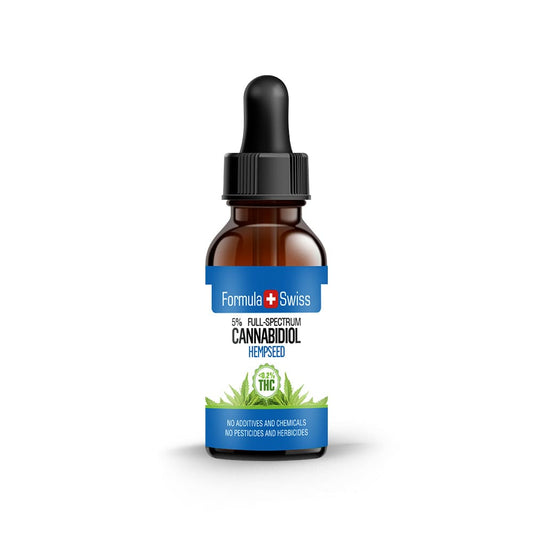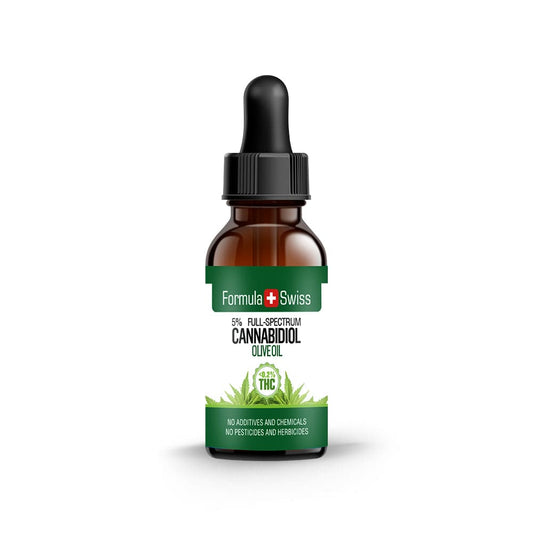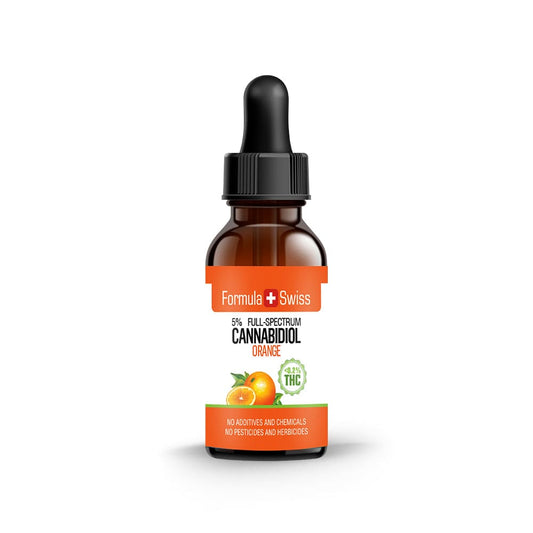After spending more than a decade working with hemp and cannabis, I’ve learned that the plant has a lot more to offer than just the big-name cannabinoids like CBD and THC. One compound that keeps coming up in my research is oleamide.
It’s a naturally occurring fatty acid amide that the body produces on its own. Even though it’s not technically a cannabinoid, it shares some structural traits with endocannabinoids and seems to interact with similar systems, which makes it especially interesting.
In this piece, I want to take a closer look at oleamide, what it is, how it’s made in the body, and why it matters in the broader area of hemp compounds. As we keep digging into the full spectrum of what hemp can offer, compounds like oleamide are a good reminder that there’s still a lot we don’t talk about enough beyond the usual suspects.
Save up to 30% when you order your CBD oil today
Key takeaways
- Oleamide is a naturally occurring fatty acid amide that plays a role in various biological signalling processes.
- It is not a cannabinoid but shares structural similarities with certain endocannabinoids.
- Oleamide is produced in the body, particularly during periods of extended wakefulness.
- It can interact with components of the endocannabinoid system, including cannabinoid receptors.
- Oleamide’s presence in both the human body and certain plant extracts makes it a compound of growing interest in hemp research.
This article is provided for informational purposes only and does not relate to any of the products available in our webshop. For more information, please see our full disclaimer.
Understanding oleamide and its significance
Oleamide is a fascinating compound that connects the natural world with industrial innovation. It has been observed in biological systems and is now widely applied in modern materials and manufacturing. This article takes a closer look at oleamide, from its presence in nature to its growing role in industry.
Structurally similar to oleic acid, oleamide has been linked to important biological processes such as rest cycles and neural signalling. Research published in Frontiers in Cellular Neuroscience highlights how this compound may influence early brain development, particularly in relation to sleep-related changes.
Oleamide interacts with various biochemical systems, including those involved in inflammation and neural communication. It has also been shown to affect pathways associated with the endocannabinoid system, making it a subject of ongoing interest in neurobiology.
The molecular structure of oleamide
Oleamide, chemically known as (Z)-octadec-9-enamide, is a fatty acid amide with the molecular formula C18H35NO. Structurally, it consists of an 18-carbon chain with a cis double bond at the 9th carbon and a terminal primary amide group (-CONH₂).

Derived from oleic acid, its structure can be condensed as CH3-(CH2)7-CH=CH-(CH2)7-CONH2. The cis double bond introduces a kink, while the amide group enables hydrogen bonding.
Oleamide in the natural world
A study published in the journal PLoS ONE found that oleamide is a key part of the chemical signals used by cleaner shrimp (Lysmata boggessi). It plays a specific role in mating behaviour, highlighting its importance within the reproductive patterns of certain marine species.
Historical and modern uses of oleamide
Oleamide was initially researched for its biological activity in animals. Over time, attention has shifted towards its technical potential.
Today, it is used in a variety of industrial settings, such as in polymers where it functions as a slip agent, and in lubricants to improve performance. These applications reflect its versatility, but also prompt questions about environmental impact, particularly as its use continues to expand.
Oleamide: A key component in marine biology
Oleamide is a compound found in the marine environment, both as a naturally occurring substance and as a result of human activity. Its presence in the ocean reveals a complex relationship with marine life, one that is both biologically interesting and environmentally concerning.

Research led by Paula Schirrmacher at the University of Hull found that oleamide, a plastic additive, can influence the behaviour of hermit crabs. The study observed that the crabs responded to oleamide with increased respiration and were strongly drawn to it, much like they would be to natural food cues.
These findings suggest that oleamide may interfere with natural instincts in marine animals and highlight broader concerns about how plastic-related substances affect ocean ecosystems.
The connection between oleamide and marine organisms is not straightforward. Here’s a closer look at its observed effects in marine biology:
| Impact area | Description | Consequences for marine life |
|---|---|---|
| Behavioural changes | Oleamide can mimic natural chemical signals, attracting or confusing marine species. | Animals such as hermit crabs may struggle to find appropriate food sources or avoid threats. |
| Respiratory response | Exposure to oleamide can affect gill function and breathing patterns. | This may lead to lower energy levels and reduced resilience in aquatic conditions. |
| Ecological misguidance | Oleamide may cause marine animals to associate plastic with food-related cues. | This behavioural confusion could impact their well-being and add to the challenges of ocean plastic pollution. |
In short, oleamide plays a notable role in the marine environment, especially as human-made materials enter natural habitats. Continued research and strong environmental safeguards are essential to better understand its impact and to help protect ocean ecosystems.
Order and get up to 30% off your CBD oil
Oleamide as a cannabinoid-like compound
Oleamide is a naturally occurring fatty acid amide that’s caught the interest of researchers for how it interacts with the endocannabinoid system (ECS), a complex signalling network that plays a role in maintaining internal balance.
Even though its structure is quite different from well-known compounds like cannabidiol (CBD) or tetrahydrocannabinol (THC), oleamide shows some similar behaviour. Because of this, it’s often described as “cannabinoid-like”—not in a legal sense, but in terms of how it behaves in the body.
One of the more intriguing things about oleamide is that it appears to interact with cannabinoid receptor 1 (CB1), which is found in the central nervous system. According to research in the British Journal of Pharmacology (Br J Pharmacol), it may act as a partial agonist at this site, influencing signalling in the brain.

There’s also research from Naunyn-Schmiedeberg's Archives of Pharmacology showing that oleamide can affect sleep-related activity in animal studies, especially through its interaction with serotonin receptors like 5-HT₁A.
Unlike plant-based cannabinoids, oleamide is made naturally in the body. One study published in Neuropsychopharmacology confirmed its presence in the brain and human plasma, noting that it tends to build up during prolonged wakefulness.
It’s thought to interact with multiple signalling systems, including serotonergic, GABAergic, and cannabinoid-related pathways. Because of this, oleamide is often grouped with other so-called endocannabinoid-like molecules—lipid-based compounds that play a part in the body’s internal communication systems.
While it isn’t officially classified as a cannabinoid, oleamide’s connection to the ECS makes it an interesting molecule to watch. Ongoing research may help shed more light on its role within this broader family of naturally occurring signalling agents.
Order CBD oil now and save as much as 30%
The role of oleamide in Endocannabinoid System regulation
Oleamide is a naturally occurring fatty acid found in the body. It interacts with various biological systems, including the endocannabinoid system, which plays a key role in maintaining internal balance. Scientists are actively studying oleamide to better understand its broader physiological relevance.
According to a study published in the journal Pharmacology, Biochemistry and Behavior, oleamide, known to mimic certain functions of the body’s endocannabinoids, was shown to influence rest patterns in adult rats that experienced early-life stress.
By activating CB1 receptors in the brain, oleamide appears to support the regulation of sleep cycles, suggesting a possible role in promoting neurochemical balance. Ongoing research continues to explore how such mechanisms may influence overall function.

A review featured in the journal Current Pharmaceutical Design describes oleamide as a lipid that can modulate brain activity by influencing serotonergic pathways and reducing communication through gap junctions.
These interactions point to a wider influence on how the brain processes stimuli, potentially affecting areas such as mood and neural response to stress. However, further studies are required to clarify these observations.
Additional research, such as that published in Frontiers in Pharmacology, explores how oleamide might help regulate neurochemical activity under stress by reducing excitatory imbalances through calpain inhibition.
As understanding of oleamide’s pathways grows, it may become a focus of interest for those studying how the body responds to physiological strain and chemical shifts within the brain.
The Endocannabinoid System (ECS)
Oleamide's environmental impact and marine life
The presence of oleamide in marine environments is an emerging environmental concern. As a plastic-related compound, its influence on ocean ecosystems is becoming increasingly evident.
A 2024 research paper published by the Social Science Research Network (SSRN) highlights how oleamide, found in plastic leachates, can disrupt predator-prey interactions in benthic ecosystems.

Further findings published in the Marine Pollution Bulletin in 2021 indicate that oleamide can trigger hyperactive behaviour and attraction in hermit crabs. Mimicking natural chemical cues linked to decomposition, oleamide may lead these scavengers to plastic debris, interfering with natural foraging behaviour.
Marine species respond to oleamide in different ways. Some may adapt over time, while others show acute sensitivity, which can affect ecological balance and influence food web dynamics.
| Effect | Species | Observation |
|---|---|---|
| Reproductive inhibition | Blue Mussels | Reduced fertility patterns across sexes |
| Behavioural alteration | Marine filter feeders | Increased interaction with microplastics |
| Survival rate decline | Various marine species | Higher mortality is observed in early developmental stages |
These insights point to the need for urgent action. Addressing oleamide-related pollution calls for coordinated efforts, both global and local, to help safeguard marine ecosystems and support the long-term health of our oceans.
Industrial uses of oleamide and environmental concerns
Oleamide is key in many industries. It helps make things run smoothly in cars, personal care, and electronics. But using oleamide can harm the environment if it leaks into the sea.
| Industry | Use of oleamide | Environmental concerns |
|---|---|---|
| Automotive | Lubrication and part manufacturing | Pollutants from production runoff |
| Personal care | Product smoothing agents | Long-term bioaccumulation in waterways |
| Electronics | Component coatings | Leaching of chemicals during disposal |
Published in the journal Foods, this 2020 study identifies oleamide as a common plastic additive used in manufacturing that can migrate into food and beverage products. While valuable for industrial use, its presence in consumer items raises food safety and toxicological concerns.
Oleamide in research: What scientists are discovering
Oleamide research reveals fascinating insights. It shows how oleamide interacts with the environment, mainly in marine biology. I'm keen on how natural compounds affect marine life, so I've been following these studies closely.
Recent research is uncovering how oleamide tricks aquatic species' sense of smell. This is key to understanding underwater communication. Many marine species must survive and reproduce.

Research also looks into oleamide's effects on marine ecosystems. It suggests that oleamide could make environmental stresses worse. This highlights the need for more studies to protect marine life from oleamide's impact.
Studies now cover everything from molecular effects to how oleamide affects entire ecosystems. This wide view is essential for finding ways to use oleamide for marine health and biodiversity.
As we approach major scientific breakthroughs, oleamide research is crucial. It not only uncovers new marine biology interactions but also demands more awareness and protection for our oceans.
Addressing the challenges of oleamide pollution
I often explain complex environmental issues. Oleamide pollution is a big problem for marine ecosystems. It's not just about cutting down pollutants but also fixing the damage done to marine life and habitats.
In this article, I explore ways to fight oleamide pollution. We focus on keeping marine biodiversity and water quality healthy.
Several strategies are key to tackling oleamide pollution. First, we need better rules for industrial waste. This ensures oleamide is controlled before it harms the sea.

Also, spreading the word about pollution is crucial. This helps both industries and the public to act responsibly and reduce chemical spills.
Scientific studies are vital to understanding oleamide's impact on marine life. By learning more about its effects, we can create better solutions. These might include using natural agents to clean up the sea.
- Improving rules and monitoring industrial waste with oleamide.
- Starting campaigns to teach people and industries about the dangers of waste.
- Supporting research to learn more about oleamide's harm to marine life.
- Trying out new ways to clean up the sea from oleamide pollution.
Stopping oleamide pollution needs ongoing effort from everyone. By combining strong science, good laws, and community actions, we can protect our oceans.
Oleamide: Friend or foe?
I've looked at its two sides in our oceans. On one hand, oleamide helps marine life by playing key roles in their cycles. But, on the other hand, it can pollute our seas, harming the delicate balance of our oceans.
Understanding oleamide's impact on marine life is complex. It can be a natural part of the ocean, helping to regulate it. But, it can also be a pollutant from human activities. This shows oleamide's double nature: it can both help and harm marine life.
Keeping our oceans healthy is a big challenge. Research into oleamide's effects is key to solving this. We must make smart choices about how we use oleamide and reduce its pollution. This way, we protect our oceans and the life they support, for the future of our planet.
Personal perspective
Working closely with cannabinoids for years, I’ve developed a real curiosity for the lesser-known compounds that often fly under the radar. Oleamide is one of those quietly fascinating.
It doesn’t get the spotlight like CBD or CBG, but its role in the endocannabinoid system and the way it interacts with different receptors make it worth paying attention to. I’m not here to hype it up, just to explore where it fits into the bigger picture of cannabinoid science and how it might inform what we create next.
Something I always keep in mind, especially as interest grows in these natural compounds, is the environmental impact of how we work. Whether it’s sourcing raw materials or refining extracts, the way we handle production matters.
Sustainability isn’t just a nice-to-have; it’s something we need to build into the foundation of this industry if we want it to be future-facing and responsible.
Don’t miss out—save up to 30% when you purchase CBD oil today
Frequently asked questions
What exactly is oleamide?
Oleamide is a synthetic compound often used in plastic manufacturing, where it acts as a lubricant to help moulded items release more easily. Interestingly, it also occurs naturally in the human body, where it's believed to play a role in certain biological processes. Chemically, it's a fatty acid derivative that interacts with various systems in the body, though its full effects are still being explored.
How does oleamide impact marine biology?
Research has shown that oleamide can attract marine creatures such as hermit crabs, drawing them towards plastic debris in the ocean. This interaction can alter their natural behaviours, including movement and respiration, and may disrupt marine ecosystems over time.
What role does oleamide play in the natural world?
In the marine environment, oleamide is known to be part of the chemical signalling used by species like cleaner shrimp. It’s also chemically similar to compounds released during the natural breakdown of organic matter, which may explain its influence on animal behaviour in the sea.
Are there environmental concerns associated with the use of oleamide?
Yes, oleamide entering the marine environment is an emerging concern. Studies suggest that it can affect species such as hermit crabs and blue mussels, potentially interfering with important life processes. As its use in industrial materials continues, there's growing interest in understanding and mitigating its environmental impact.
How does oleamide affect the endocannabinoid system?
Oleamide interacts with the endocannabinoid system, a biological network that helps regulate a range of internal functions. While the details of these interactions are still being researched, the compound appears to influence certain signalling pathways within this system.
What behavioural changes do hermit crabs exhibit in response to oleamide?
When exposed to oleamide, hermit crabs have been observed to increase their movement, breathe more rapidly, and actively approach plastic items. These changes suggest that the compound disrupts their normal patterns and could have wider implications for their survival and the balance of marine habitats.
In what industrial applications is oleamide used?
Oleamide is primarily used for its ability to reduce friction. It’s commonly added to plastic products to assist with mould release and improve surface slip. It's also used in inks and coatings for similar reasons, helping materials glide or layer more efficiently during processing.
What are the implications of oleamide in the context of climate change?
As climate change alters ocean conditions, including temperature and pH, there are concerns that these shifts could intensify the effects of pollutants like oleamide. Scientists are examining how such environmental changes might influence the way marine organisms respond to chemical exposure.
How do researchers propose to address the challenges caused by oleamide pollution?
Addressing oleamide pollution starts with deeper research into how it affects marine organisms. Current studies are focusing on behavioural and reproductive impacts, especially under varying environmental conditions. Long-term, the aim is to reduce its ecological footprint through improved materials management and innovation in safer alternatives.
Can oleamide be considered beneficial to the marine ecosystem in any way?
While oleamide can resemble natural chemical cues found in the ocean, its presence in synthetic materials tends to cause more confusion than benefit. The risks it poses to marine life, by disrupting natural behaviour, are currently seen as outweighing any ecological value it might offer.






